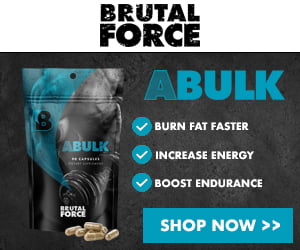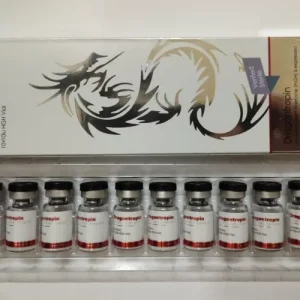Steroids
10-Week Army Combat Fitness Test (ACFT) Plan

Army Combat Fitness Test (ACFT) Plan
You will be in for a rude shock if you still think combat fitness training is all about climbing hills with sandbags strapped to your back. Things changed since everyone else changed tune and started focusing on strength, stamina, and speed. The new Army Combat Fitness Test (ACFT) is not for the faint-hearted. You don’t stand a chance unless you are well prepared for it. Before attending regular barracks training, you must prepare yourself physically and psychologically. Our 10-week AFCT plan is all you need to be on par with or even better than your comrades.
We will not lie to you with empty motivation; ACFT is all about hard work; there is no shortcut. That is why we must always appreciate our armed forces; they put a lot of effort into their training and real-time combat operations. Surprisingly, army combat fitness tests last a little over half an hour. However, many intense exercises take place within that period. The test happens in 6 parts over 8 – 12 weeks. The pieces of training take place in no particular order.
Related Article:: 5 Fitness Tips While Gyms Are Closed
Army Combat Fitness Test Order of Events
Test 1: Trap Bar Deadlift 3-Rep Max
The test usually competes with a hex bar, otherwise called a trap bar. Each trainee has 10 minutes to warm up on the deadlift before lifting it on a 3-prep max. The 10 minutes period allows you to increase the load and prepare to lift it. When the ACFT begins, you cannot raise the bar and drop it; you hold it there until the set is over. If you can’t reach the end, you have failed the test. You are also required to kiss the ground between reps. After about 5 minutes of doing the deadlift test, you will have about 2 minutes to catch your breath before moving to the next test.
Test 2: Standing Power Throw
It involves throwing a medicine ball to a target behind you. You will start with a 10-lb. ball in hand. The next step is to perform a kettlebell swing before tossing the ball to a target. How far you throw the ball is a measure of your strength. Those who throw the ball the farthest have strong shoulders, glutes, and a powerful back. It also means their shoulder mobility is good. Usually, you are given one free throw for practice purposes, and then you take two official throws. They record your best distances to compare with those of other trainees.
Test 3: Hand Release Pushups
ACFT pushups have no room for cheating. You are not allowed to do knee pushups or incomplete pushups. Without solid shoulders and a chest with stamina, there is little or no chance of you passing this test. Additionally, you must have the excellent shoulder mobility to perform this exercise. The procedure involves hitting the ground with the length of your body with every rep; you then jump up, lifting your hands off the ground. Pass the test without cheating, and you’re the next commando.
Test 4: Sprint-Drag-Carry (SDC)
The test is a 50-meter lap timed event performed by soldiers. They are supposed to run 25 meters in each direction.
- Lap 1 - The soldier sprints down, touching the line at the other end with your hand. They then race back to the starting point and cross the line.
- Lap 2 - After crossing the starting line, you grab the straps attached to a 90 lb. sled and pull them until the sled crosses the 25-meter line. You then pull it back to the crossing line and make sure it crosses.
- Lap 3 - The soldier then stays crouched and does end-end side laterals. They should touch the 25-meter line with both hand and foot before they lateral back to the starting line, all this time facing the same direction.
- Lap 4 - The soldier grabs two 40 lb. kettlebells, races with them to the 20-meter line, and touches it with their foot. They then run back and make sure they cross the starting line.
- Lap 5 - In this final lap, the soldier sprints to the other end and back, ensuring they touch the 25-meter line with their hands and feet before running back to cross the starting line.
Test 5: Leg Tuck
Test five is a leg training exercise where the soldier combines half pull-up and knees-elbows while hanging from a bar. This particular exercise is not for the unfit, and many soldiers have difficulty completing it. If your weight is a bit too much, and you do not have enough training, this exercise will stretch your limits. Make sure to shed any extra fat you may have to be able to pass this test. The leg tuck exercise typically depends on your core strength and a lot of experience with pull-ups.
The soldier has two minutes to complete several leg tucks. They are supposed to complete as many rounds as possible within two minutes. However, there is a lower limit regarding how many legs tuck one can do. Strength, stamina, and speed are the most important things you need to complete as many leg folds as possible here.
Test 6: Two-Mile Run
The sixth and last test of ACFT is a 2-mile run by the soldiers through a chosen route. While this test may appear most effortless, you’ll be too exhausted from the other five tests to make it a piece of cake. Only soldiers with unmatched strength and stamina will perform exceptionally in the 2-mile run. It is why all military runs happen after other forms of training to ensure the soldiers have the right energy for combat.
Essential Tips to Prepare for the Army Combat Fitness Test
There is no big secret to passing the ACFT besides the regular fitness program. Here are a few tips to prevent you from getting it once you arrive at the training center.
Eat High-Protein Meals and Avoid Fat
ACFT is about strength; you need the muscle to perform all exercises. Proteins help your body repair and recover after every workout. Additionally, it enables you to get leaner, which is very important for the leg tuck exercise. Even as you take high-protein foods, ensure they are low in fat. Too much fat will slow you down, and believe me, you wouldn’t want to come last in every test.
Must Read:: 5 Creative High Protein Meal – Prep Dishes to Save You Time
Do 3 – 5 Hours of Exercise a Day
Although ACFT requires a minimum of 4 hours per week, you can do three, and you’re good to go. Consistency and commitment is the most critical aspect of this training. Keep going even when the going gets tough. You can find motivation from many things, including finding a lifting partner. Most importantly, set short-term but realistic goals for your training exercises. It will be much easier for you when the times come for actual hardcore ACFT events.
Choose Your Supplements Wisely
Supplements are a double-edged sword; they can make or break you, as far as ACFT is concerned. Soldiers and other fitness enthusiasts fall short of optimal nutrition due to overdependence on protein supplements. The trick here is trying to maintain the balance. Furthermore, not all protein supplements are ideal for combat training, so you must supplement wisely. Focus on quality, not quantity.
Have Enough Rest
Enough sleep helps your body recover and carry out self-repair. The recommended duration of a night’s sleep is eight hours. However, you can still have enough rest if you sleep for seven hours. Many people don’t know that sleep helps you eliminate extra fat. The energy your body needs to perform its physiological functions when resting comes from fat breakdown. For this reason, the longer one sleeps, the more one sheds extra fat.
Conclusion
If you think these exercises are too much, think again because they are more comfortable than most bodybuilding and fitness exercises. However, each ACFT exercise should achieve a particular goal, and it does. A soldier’s motto is learning through pain and suffering because there is no learning in battle; it’s a matter of life and death. The best thing about ACFT is that soldiers are given enough warmup time before doing the official exercises. That should prepare you physically and psychologically for the task ahead.
Overall
Additionally, there is a lot of motivation around you during the test from watching your comrades do them. ACFT may be exaggerated out here, only to find that things are a bit easier on the ground. Similarly, you may be overconfident, only to get shocked by the intensity of the exercises.
You don’t have to be in the army to do ACFT exercises. Anyone can do it for their fitness and health development. Don’t be afraid to face the little pain and suffering every day because you build something better. Finally, for our men and women in uniform who put their life on the line every day to protect us from internal and external threats, we say thank you!
Steroids
AOD-9604: The Fat-Burning Peptide Explained
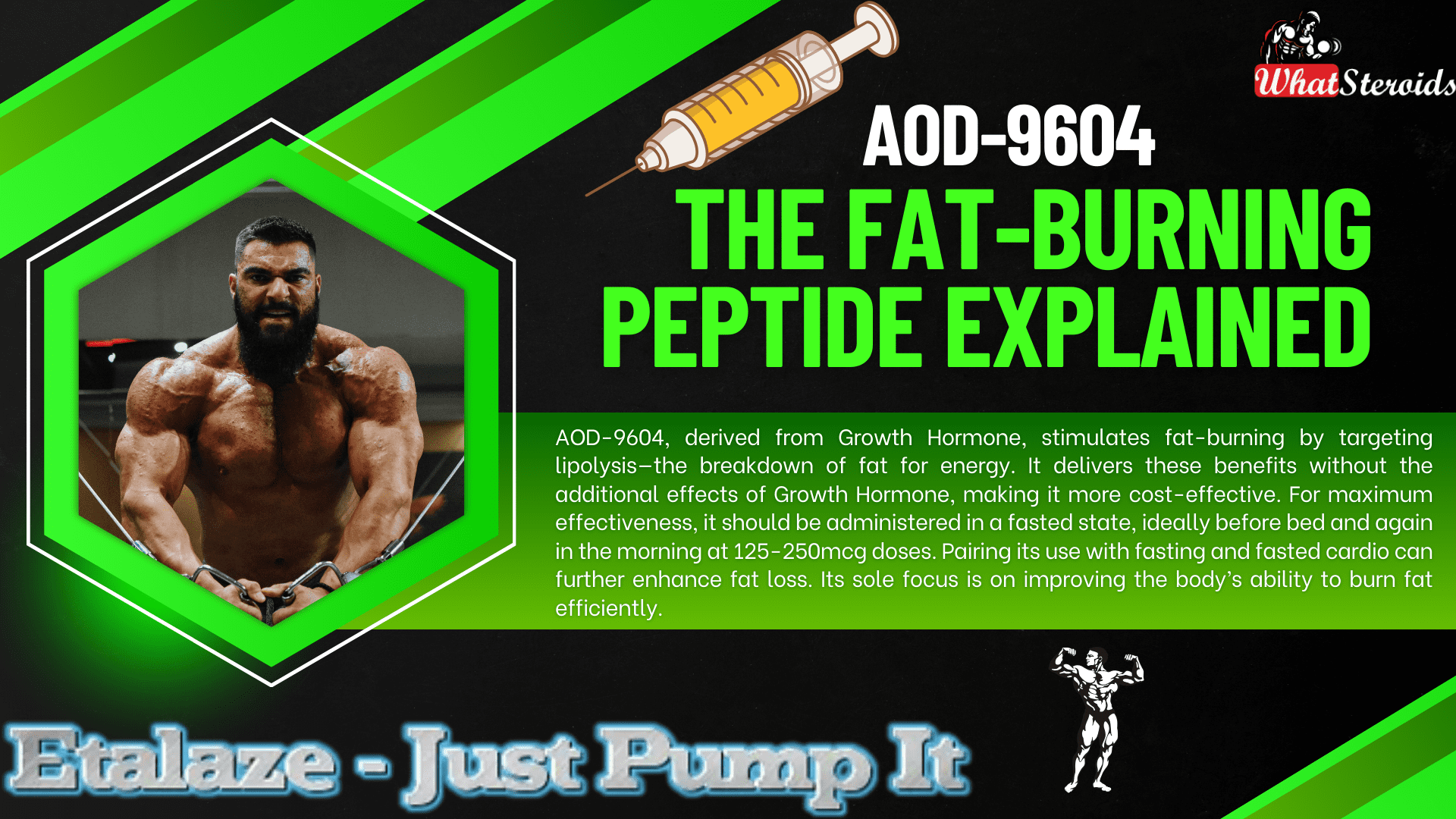
AOD-9604, along with the similar HGH Frag 176-191, is a peptide derived from Growth Hormone that includes only the amino acids in HGH responsible for stimulating fat breakdown, known as lipolysis.
This means that these peptides offer the fat-burning benefits of HGH without its other effects—whether beneficial or adverse—and come at a lower cost.
Related Article: Anavar Cycle for Men and Women
Lipolysis refers to the process where fat cells are broken down to be utilized as energy. AOD-9604 promotes accelerated fat loss by increasing the body's use of fat as fuel.
For optimal results, the peptides should be used in a fasted state. AOD-9604 and Frag 176-191 are most effective when administered at a dose of 125-250mcg before bedtime (at least 3-4 hours after eating) and in the morning at the same dose, followed by a fasting period of 3-4 hours, ideally combined with fasted cardio.
Check Out Dragontropin HGH 100 IU by Dragon Pharma
Similar Peptides with Fat-Burning Effect
Here’s a list of 10 peptides similar to AOD-9604, each with a brief description:
Ipamorelin: A growth hormone-releasing peptide (GHRP) that stimulates the natural release of growth hormone, promoting fat loss, muscle growth, and improved recovery without affecting other hormones like cortisol or prolactin.
CJC-1295: A peptide that increases growth hormone and IGF-1 levels, aiding in fat loss, muscle gain, and improved sleep quality. It has a long half-life, making it convenient for users.
HGH Frag 176-191: A fragment of human growth hormone specifically designed for fat-burning. It targets adipose tissue without the broader effects of full-length HGH.
Tesamorelin: Known for reducing visceral fat, this peptide stimulates the release of growth hormone and is often used for weight management and metabolic health.
BPC-157: While primarily known for healing and recovery, BPC-157 can support fat loss indirectly by improving gut health and reducing inflammation.
Melanotan II: Originally developed for skin tanning, it also has appetite-suppressing properties, making it useful for weight management.
Thymosin Beta-4 (TB-500): Focused on healing and recovery, it can enhance physical performance and indirectly support fat loss through improved activity levels.
GHRP-6: A growth hormone-releasing peptide that boosts appetite and metabolism, aiding in muscle growth and fat loss.
Semaglutide: A GLP-1 receptor agonist that regulates appetite and blood sugar levels, making it effective for weight loss and metabolic health.
MK-677 (Ibutamoren): A growth hormone secretagogue that increases growth hormone and IGF-1 levels, promoting fat loss, muscle gain, and improved recovery.
List of Peptides With a Counteractive Effect Bodybuilders Must Avoid
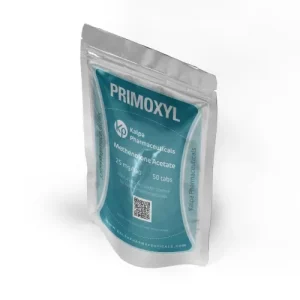 Click Here to Buy Primoxyl 25 by Kalpa Pharmaceuticals
Click Here to Buy Primoxyl 25 by Kalpa Pharmaceuticals
Some peptides can inadvertently lead to fat gain due to their effects on metabolism and appetite regulation. Here are a few that bodybuilders might want to avoid or use cautiously:
- GHRP-6 – While it stimulates growth hormone release, it also significantly increases appetite, which can lead to excess calorie consumption and fat gain.
- IGF-1 LR3 – This peptide enhances muscle growth but can also promote fat storage if not carefully managed with diet and training.
- MK-677 (Ibutamoren) – Though technically a growth hormone secretagogue rather than a peptide, it boosts GH levels but often leads to increased hunger and potential fat accumulation.
- CJC-1295 with DAC – While effective for muscle growth, its prolonged GH release can sometimes lead to unwanted fat retention if not paired with a strict diet
Overall
AOD-9604, derived from Growth Hormone, stimulates fat-burning by targeting lipolysis—the breakdown of fat for energy. It delivers these benefits without the additional effects of Growth Hormone, making it more cost-effective. For maximum effectiveness, it should be administered in a fasted state, ideally before bed and again in the morning at 125-250mcg doses. Pairing its use with fasting and fasted cardio can further enhance fat loss. Its sole focus is on improving the body’s ability to burn fat efficiently.
Read More: How Much Do You Know About B-AET? A Fat Burner You’ve Been Missing
Bodybuilding
Understanding Trenbolone-Induced Cough (“Tren Cough”)

Trenbolone, a potent anabolic steroid, can sometimes cause “tren cough”—a sudden and intense coughing episode shortly after injection. Although not exclusive to Trenbolone, it is more commonly associated with this substance due to its highly irritant nature.
 Click Here To Buy 1-Test Cyp 100 by Nakon Medical
Click Here To Buy 1-Test Cyp 100 by Nakon Medical
Mechanisms Behind Tren Cough
Solvent and Carrier Irritation
Trenbolone formulations often include volatile solvents like benzyl alcohol or benzyl benzoate, which may irritate lung tissues when absorbed quickly into systemic circulation.
Prostaglandin Release
Trenbolone promotes increased production of prostaglandins, particularly PGF2α. This compound triggers contraction in the smooth muscles of the lungs, leading to bronchoconstriction and coughing.
Micro-Oil Embolism
Tiny oil droplets from an injection can reach capillaries and travel to the lungs, causing mild embolic reactions that lead to temporary oxygen deprivation and coughing.
Histamine and Mast Cell Activation
For some individuals, Trenbolone triggers histamine release and mast cell activation, mimicking an allergic response and causing bronchospasms and cough reflexes.
Related Article: Best Syringes for Steroid Injection on Amazon
Using Salbutamol (Albuterol) to Manage Tren Cough
- Salbutamol, a widely-used β2-adrenergic receptor agonist, can alleviate tren cough symptoms by:
- Relaxing bronchial muscles, easing spasms that cause coughing.
- Inhibiting prostaglandin effects, reducing bronchoconstriction associated with PGF2α.
- Opening airways, preventing severe respiratory restrictions in susceptible individuals.
Application Methods
Inhaler (Optimal)
Take 1–2 puffs of salbutamol (100–200 mcg) 5–10 minutes before a Trenbolone injection. If coughing occurs afterward, additional puffs can swiftly resolve the issue.
Oral Tablets (Moderate)
Consuming 2–4 mg tablets 30–60 minutes before injection offers slower, longer-lasting relief but may be less effective than inhalation methods.
Nebulizer (Severe Cases)
For individuals with frequent episodes, nebulized doses of 2.5 mg salbutamol can provide substantial relief.
Preventive Measures to Reduce Tren Cough Risk
- Inject slowly to minimize systemic absorption and irritant effects.
- Split doses to lower reaction severity with smaller quantities.
- Opt for ventrogluteal injection sites, which have fewer blood vessels, reducing oil embolism risk.
- Choose lower-concentration solutions to lessen irritation, as higher concentrations (e.g., Tren Ace 200 mg/ml) are more likely to provoke reactions.
What Other Steroids Can Induce Coughing?
Here's a curated list of peptides, SARMs, and PEDs that may potentially cause coughing or respiratory irritation in bodybuilders and fitness enthusiasts:
Peptides
IGF-1 LR3 (Insulin-like Growth Factor): Known for its anabolic effects, IGF-1 LR3 can occasionally cause mild respiratory irritation due to systemic absorption.
TB-500 (Thymosin Beta-4): While rare, improper injection techniques or high doses may lead to transient coughing episodes.
GHRP-6 (Growth Hormone-Releasing Peptide): This peptide can stimulate histamine release, potentially leading to bronchospasms and coughing.
SARMs (Selective Androgen Receptor Modulators)
RAD-140: (Testolone) Some users report throat irritation or coughing, often attributed to solvents used in liquid formulations.
YK-11: Known for its myostatin-inhibiting properties, YK-11 may cause mild respiratory discomfort in sensitive individuals.
LGD-4033 (Ligandrol): Though uncommon, some users experience coughing due to carrier solvents or allergic-like reactions.
PEDs (Performance-Enhancing Drugs)
Boldenone Undecylenate (Equipoise): This injectable steroid can cause “Equipoise cough,” similar to tren cough, due to oil embolism or irritant solvents.
Testosterone Suspension: The water-based formulation may lead to coughing episodes if injected improperly or absorbed rapidly.
Nandrolone Decanoate (Deca-Durabolin): While less common, coughing can occur due to histamine release or systemic irritation.
More Tips to Minimize Coughing Risks
- Use proper injection techniques to avoid embolic reactions.
- Opt for lower-concentration solutions to reduce irritant effects.
- Consider antihistamines or bronchodilators for individuals prone to respiratory sensitivity.
Read More: Joint Stiffness: How to Manage It While on AAS
Are There Alternatives to Cough-inducing Steroids?
Here are some alternatives to cough-inducing steroids that can provide similar anabolic effects while minimizing respiratory irritation:
Peptides
IGF-1 LR3 (Insulin-like Growth Factor)
Promotes muscle growth and recovery without the irritant properties of certain steroids.
TB-500 (Thymosin Beta-4)
Enhances tissue repair and reduces inflammation, making it a safer option for recovery.
BPC-157 (Body Protection Compound)
Known for its healing properties, it supports muscle repair and joint health.
SARMs (Selective Androgen Receptor Modulators)
RAD-140 (Testolone)
Provides significant muscle-building effects with fewer systemic side effects compared to traditional steroids.
LGD-4033 (Ligandrol)
Boosts lean muscle mass and strength without the risk of respiratory irritation.
MK-677 (Ibutamoren)
Stimulates growth hormone release, aiding in muscle growth and recovery.
Natural Alternatives
Turkesterone
A plant-based ecdysteroid that supports muscle protein synthesis and recovery.
Ecdysterone
Another natural compound that mimics anabolic effects without the harsh side effects.
Creatine Monohydrate
Enhances strength and muscle mass through improved energy production during workouts.
Other Options
Human Growth Hormone (HGH)
Promotes muscle growth and fat loss, though it requires careful monitoring due to potential side effects.
Testosterone Boosters
Natural supplements like D-Aspartic Acid or Tribulus Terrestris can help optimize testosterone levels for muscle growth.
SARMs Alternatives
Legal and safer versions of SARMs are available, offering similar benefits without the risks associated with traditional SARMs.
Overall
We have explored the phenomenon of "tren cough," a sudden, intense coughing episode often caused by Trenbolone injections due to factors like solvent irritation, prostaglandin release, micro-oil embolism, or histamine activation. Preventive measures such as using salbutamol (via inhaler, oral tablets, or nebulizer), injecting slowly, splitting doses, and opting for lower-concentration solutions were highlighted.
Additionally, alternative compounds to tren cough-inducing steroids were discussed, including peptides like IGF-1 LR3 and TB-500, SARMs such as RAD-140 and LGD-4033, and natural options like Turkesterone, ecdysterone, and creatine. These alternatives provide anabolic effects while minimizing respiratory side effects. The conversation also underscored the importance of proper injection techniques and thoughtful compound selection to reduce risks.
Steroids
Creatine vs Myostatin: An Expert’s Analysis
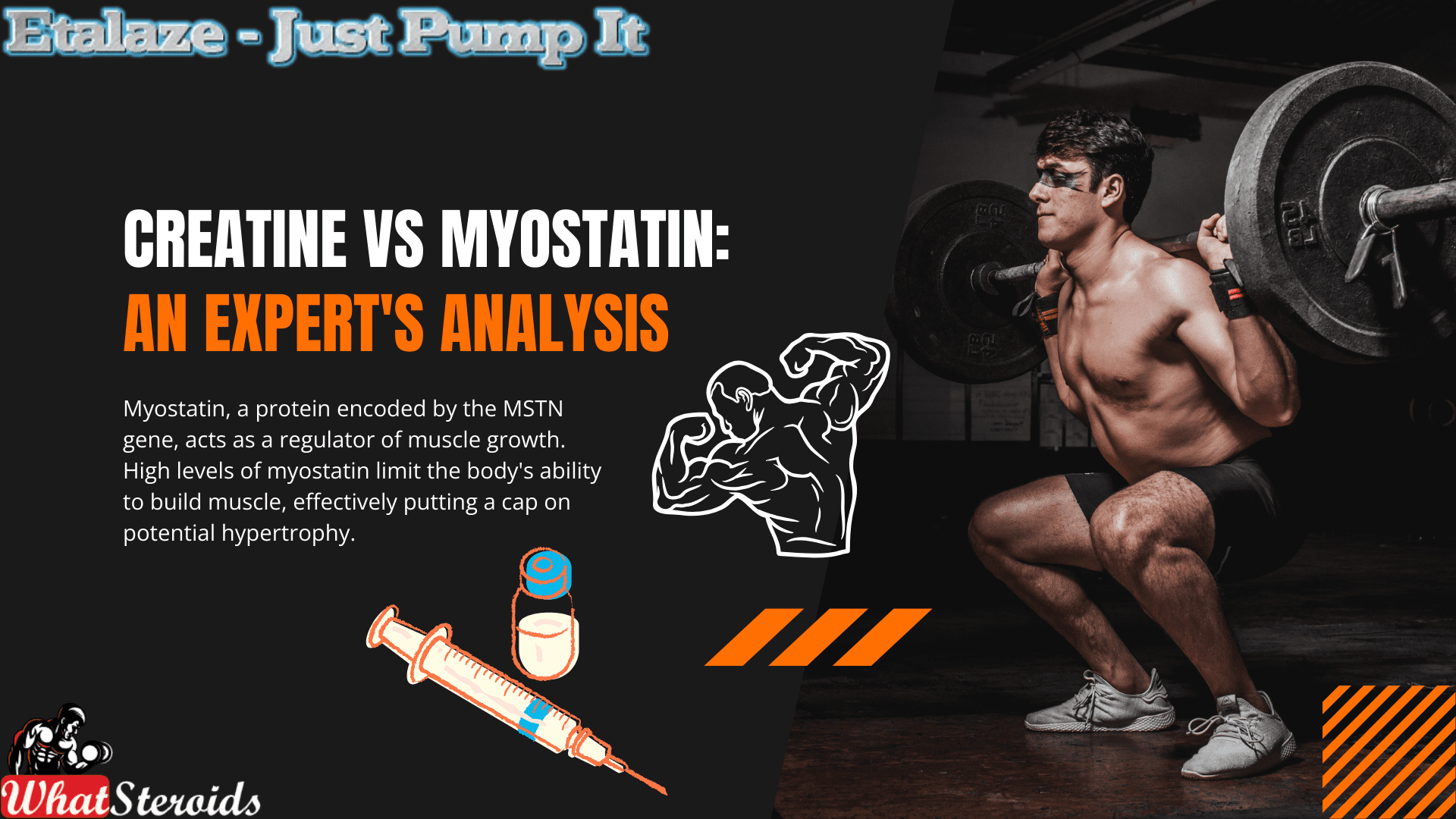
Myostatin, a protein encoded by the MSTN gene, acts as a regulator of muscle growth. High levels of myostatin limit the body's ability to build muscle, effectively putting a cap on potential hypertrophy. Inhibiting myostatin has become a focal point for bodybuilders looking to break through plateaus and achieve significant muscle gains. The question is: can creatine, a popular and widely available supplement, help in this regard?
Medical History of Myostatin and Creatine
Myostatin and creatine, while popular now in the bodybuilding world, have their roots in entirely different contexts:
Myostatin: Natural Muscle Growth Regulator
Myostatin is a protein originally identified for its role in regulating skeletal muscle mass. In nature, it serves an evolutionary purpose: by limiting muscle growth, it conserves energy, ensuring that animals (and humans) don’t expend unnecessary resources maintaining excessive muscle tissue. This was especially important in the wild, where energy efficiency could mean the difference between survival and extinction.
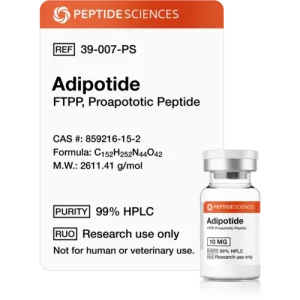 Check Adipotide (FTPP) 10mg by Peptide Science
Check Adipotide (FTPP) 10mg by Peptide Science
In the medical field, research into myostatin has focused on its role in muscle-wasting diseases. Scientists are exploring ways to inhibit myostatin to treat conditions like muscular dystrophy, where excessive muscle loss impairs quality of life. This therapeutic potential is where the idea of myostatin inhibition first began—long before bodybuilders latched onto the concept.
Creatine: Energy and Medical Applications
Creatine was originally studied for its role in energy metabolism. It’s a naturally occurring compound stored in muscle cells and plays a critical part in replenishing ATP (adenosine triphosphate), the body’s primary energy currency during short, high-intensity activities.
Before becoming a bodybuilding staple, creatine gained recognition in medical and sports science for its ability to improve athletic performance and assist with recovery. Furthermore, in medicine, creatine was investigated for neurological conditions such as Parkinson’s disease, Huntington’s disease, and muscular dystrophy, given its potential to improve muscle function and brain energy metabolism.
In the sports world, it was initially adopted by sprinters and weightlifters in the 1970s and 1980s for its energy-enhancing benefits.
Both myostatin and creatine have found new life in bodybuilding circles, demonstrating how discoveries in natural physiology and medical science can lead to transformative applications in fitness.
Benefits of Creatine as a Myostatin Inhibitor
Muscle Growth Potential: Research suggests that creatine, when paired with intense resistance training, may inhibit myostatin to a degree, fostering an environment for enhanced muscle growth.
Improved Exercise Performance: Creatine is well-known for its ability to increase ATP production, translating to better performance during high-intensity activities.
Versatility Across Fitness Levels
Whether you're a beginner or an advanced athlete, creatine offers benefits that complement various stages of muscle-building.
Must Read: A New Caffeine? What You Need to Know about Teacrine
Affordability and Accessibility
Compared to specialized myostatin inhibitors like YK-11 and ACE-031, creatine is significantly more affordable and accessible.
Side Effects of Creatine
While generally safe for most individuals, creatine supplementation does come with some potential side effects:
Water Retention: Some users experience bloating due to increased water retention in muscle cells.
Gastrointestinal Issues: High doses may lead to stomach upset or diarrhea.
Kidney Concerns: Although rare, prolonged excessive use could strain the kidneys, particularly in individuals with pre-existing conditions.
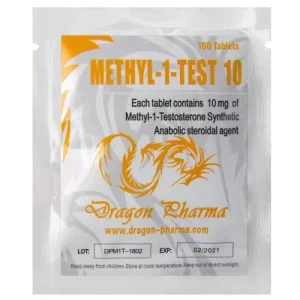 Buy Methyl-1-Test 10 -100 tabs by Dragon Pharma
Buy Methyl-1-Test 10 -100 tabs by Dragon Pharma
Alternatives to Creatine for Myostatin Inhibition
YK-11: A synthetic myostatin inhibitor derived from SARMs, offering more potent results but accompanied by more significant risks.
ACE-031: A peptide that directly inhibits myostatin, though it remains in experimental phases and is not legally approved in many regions.
Natural Alternatives
Follistatin-rich Foods: Eggs and dairy products may have natural myostatin-inhibiting properties.
Resistance Training: Intense and consistent weightlifting alone can naturally lower myostatin levels.
Where to Buy Creatine
Creatine is readily available worldwide. It can be purchased from:
Local Pharmacies and Nutrition Stores: Ideal for trusted and immediate access.
Online Platforms: Websites like Amazon, iHerb, or bodybuilding-specific stores offer a variety of brands and formulations.
Supplement Brands: Well-established brands such as Optimum Nutrition, MyProtein, and Cellucor often carry high-quality creatine.
Legality of Myostatin Inhibitors
Creatine: Creatine is completely legal and widely accepted as a dietary supplement.
YK-11 and ACE-031: These compounds exist in a legal gray area in many countries due to their experimental nature and potential risks. It's essential to research local laws before considering these options.
Best Stores and Suppliers
For reputable products, consider:
Transparent Labs: Known for purity and transparent labeling.
Optimum Nutrition: Offers pharmaceutical-grade creatine monohydrate.
Bulk Supplements: A great choice for bulk buyers seeking affordability and quality.
Our Advice to Bodybuilders
Always consult with a healthcare professional before starting any new supplement, especially if you are already using AAS or other advanced compounds.
Prioritize a balanced diet and consistent exercise routine. Supplements like creatine work best as part of a holistic approach to fitness.
Stay hydrated while using creatine to minimize water retention side effects and support kidney health.
Related Article: Best Syringes for Steroid Injection on Amazon
Overall
While creatine may not be as potent a myostatin inhibitor as advanced compounds like YK-11 or ACE-031, its affordability, safety, and accessibility make it a valuable addition to any bodybuilder's supplement stack. By leveraging its benefits alongside proper training and nutrition, you can maximize muscle growth and overcome plateaus, regardless of your fitness level.
-

 Steroids2 years ago
Steroids2 years agoShavers and Other Body Grooming Equipment for Bodybuilders In 2023
-

 Steroids2 years ago
Steroids2 years agoChatGPT and Other Avenues to Find Great Bodybuilding Coaches
-

 Steroids2 years ago
Steroids2 years agoBest Oil Recommendations Before Competition for Subtle Shimmer
-

 Steroids2 years ago
Steroids2 years agoPowerlifting Vs Power Building: Find Out the Big Difference and When to Shift Between the Two
-

 Nutrition1 year ago
Nutrition1 year agoEverything Nutritional Food: What’s Too Much Or Too Little
-

 Bodybuilding Products1 year ago
Bodybuilding Products1 year agoTelmisartan In Bodybuilding: An Expert’s Advice
-

 Anabolic Steroids1 year ago
Anabolic Steroids1 year agoLegality of Anabolic Steroids In Latin America
-

 Beginners2 years ago
Beginners2 years agoTren Cycle for Beginners
-

 Bodybuilding1 year ago
Bodybuilding1 year agoChia Seeds in A Bodybuilder’s Diet: An Expert’s Advice
-

 Anabolic Steroids9 months ago
Anabolic Steroids9 months agoJoint Stiffness: How to Manage It While on AAS
-

 Bodybuilding8 months ago
Bodybuilding8 months agoPrimal Movements: Our Ultimate Guide for Maximum Results
-

 Steroids12 months ago
Steroids12 months agoAnadrol Cycle: Benefits, Doses, Alternatives, etc.
-

 Bodybuilding1 year ago
Bodybuilding1 year agoList of FDA-Approved Peptides
-

 Bodybuilding2 years ago
Bodybuilding2 years agoCompetition Prep Cycle for Pro Bodybuilders
-

 Bodybuilding9 months ago
Bodybuilding9 months agoHow Effective is Bone Broth for Recovery?
-

 Steroids10 months ago
Steroids10 months agoOmnitope (Oxytocin)
-

 Bodybuilding1 year ago
Bodybuilding1 year agoHow Much Is Too Much Cardio? Understanding Heart Rate Zones
-

 Steroids9 months ago
Steroids9 months agoSleeping Positions for Effective Muscle Recovery
-

 Anabolic Steroids11 months ago
Anabolic Steroids11 months agoHow Much Do You Know About B-AET? A Fat Burner You’ve Been Missing
-

 Bodybuilding1 year ago
Bodybuilding1 year agoCalorie Dumping: A Bodybuilder’s Guide
-

 Bodybuilding8 months ago
Bodybuilding8 months ago2nd Edition of Natural Bodybuilding Competition Facts
-

 Product Reviews11 months ago
Product Reviews11 months agoTop Vitamins for Skin Health
-

 Bodybuilding1 year ago
Bodybuilding1 year agoDemystifying Hypertrophy Training
-

 Bodybuilding8 months ago
Bodybuilding8 months agoAre Nootropics a Better Option to AAS?
-

 Steroids11 months ago
Steroids11 months agoMajor Bodybuilding Peptides Explained

